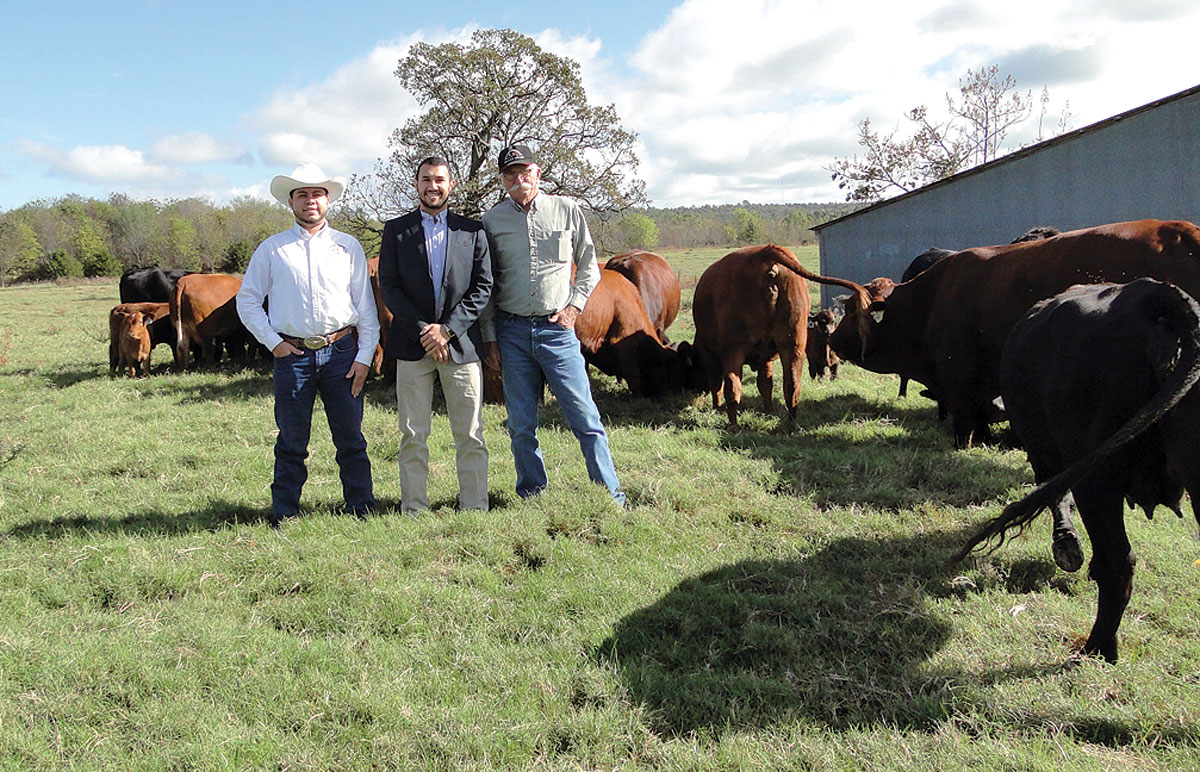
Exchange student shares what he has learned with his family in Panama to improve herd health
The saying “one person can make a difference” conjures images of Gandhi and Martin Luther King Jr. However, most of those difference-making people are not nearly as well known or appreciated. One such person was Dr. Paul Nolan, who spent 1955 through 1957 teaching agriculture at an experimental station and school in the interior of Panama. Part of what he did was teach students how to bale and store hay, as well as produce silage that could be used during Panama’s five-month dry season. In addition, molasses was very cheap and Dr. Nolan helped developed both a poultry and dairy ration with molasses to better meet livestock nutritional needs.
The exchange wasn’t just one way. Panama’s climate fostered the two-way exchange of ideas, as well as giving Dr. Nolan a more worldwide perspective on agriculture and the need to feed the exploding worldwide population. Consequently, he strove to keep a strong link between Panama and the University of Arkansas. In 2012, another venue opened up when Panama began offering scholarships for qualified Panamanian students for as much education as they wanted in exchange for returning to Panama for the same number of years and working in their specialized fields.
Brayan Saldaña Rios from San Carlos, Panama, a junior agricultural resident in Fayetteville, Ark., is one of those students.
“Science is important, and the people and Panama are way behind in their ability to embrace current advances in some parts of the agricultural sector,” Brayan said. “We do have the technologies, but the allocation of those resources are not available to all producers.”
Brayan’s family dairy farm is a perfect example of both Dr. Nolan’s impact and how incorporating one simple practice can foster change. Brayan’s parents, Martin Saldaña and Ximara Rios, use a silage and molasses ration Dr. Nolan introduced. In addition, Brayan explained to his parents the importance of using a one needle per animal and only once when administering vaccinations or medication rather than one needle for the whole herd. The results have been dramatic on both fronts. The dry season is now manageable and fewer animals are becoming ill because of needle use.
The geometry of change is like an inverted pyramid. Brayan’s father has told others of his success, who will try the same small change and spread the word. One idea, like one person, can make a huge difference in people’s lives.
Coming to the U.S. meant Brayan couldn’t help on the family dairy farm, but Brayan’s parents knew they couldn’t afford to give their son that opportunity and believed Brayan’s education would benefit the whole country. Brayan’s animal science education is focused on water quality, and animal handling and nutrition. He wants to introduce to Panama the tremendous benefits of using a disinfectant for water lines, the use of the right equipment with specific animals and biosecurity programs. Those changes are neither expensive nor complicated, but important in keeping farm animals healthy.
Three weeks before Dr. Nolan passed away in January 2016, Brayan and other Panamanian agriculture students met with him. The discussion led to the group’s belief that agriculture is a key for a better world. They formed an organization called Agro-Panama International with the mission to help smaller producers bring more food to the tables of more families. One goal is to create an agricultural foreign exchange program with the University of Arkansas as an improvement over the system now in use. They hope to build a pool of local farmers in both countries that will offer hands-on experience, perhaps through internship programs.
“Perhaps the most important things I have learned so far is the importance of coordination and rules. They can affect the whole population through the production of more and better food. As important is the understanding that both the coordination and rules must be something smaller farmers will enthusiastically embrace,” Brayan explained. “Being responsible for more food for one family would be a huge victory, but the potential exist to help many more. Change happens only when people step up and take charge but also only when look through the eyes of those they are trying to help. Innovations like AI and ET simply are not feasible at this time for the people we are trying to help. We have to start where they are, not with technologies that are impractical for them.”
While Panama’s scholarship program does not require a science major, the impact of science majors on Panamanian agriculture is corroborated by the range of interests of the seven agricultural students who are currently enrolled at the U of A as part of Agro-Panama International. Brayan’s main areas of interest are nutrition, genetics and water quality. Esteban Miranda, whose major is civil engineering, understands that his study of soils will allow Panama to not make the mistakes that Brazil did by not having sufficient roads for transporting agricultural products. Further, he has learned the importance of using concrete with its rigidity and slightly greater cost over using flexible tar based material which is less expensive but requires more frequent repair. Kenia Mitre is interested in poultry nutrition and management, while José Nunez is interested in the genetics of both poultry and crops. Josie Santamaria, another crop science major, is looking into plant breeding and hydroponics, with Doris Miranda studying food and soil sustainability and Antonio Beitia, who is working toward a PhD in poultry science, focusing on nutrition and the economics surrounding it.
Importantly, new groups of students and new members of Agro-Panama International will bring additional areas of expertise to Panama. If the exchange program and new internships evolve, more information and methodologies applicable to smaller producers will help Panama meet its own nutritional needs.






